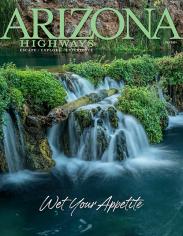This is a story about a woman who accomplished something extraordinary in a place best known for its otherworldliness. It’s a story that might make you question the physical and mental limits of the human experience. It’s a story that might inspire you.
But it’s also a cautionary tale.
That’s because this story is about Jen Hogan, the first non-Native woman to complete a solo, continuous below-the-rim hike through the entire length of Grand Canyon National Park. (Per a park spokeswoman, the "non-Native" distinction "acknowledges that tribes have called Grand Canyon home since time immemorial and it could have been possible Native people (whether man or woman) may have completed such a hike without it being historically documented.")
“She started at the easternmost boundary of Lees Ferry and hiked about 1,000 miles in just 77 days, finishing at the westernmost boundary, Pearce Ferry,” reads a March 2022 Instagram post from the park’s official account. “There is no trail that spans the entire length of this rugged landscape, which makes for an incredibly challenging journey.”
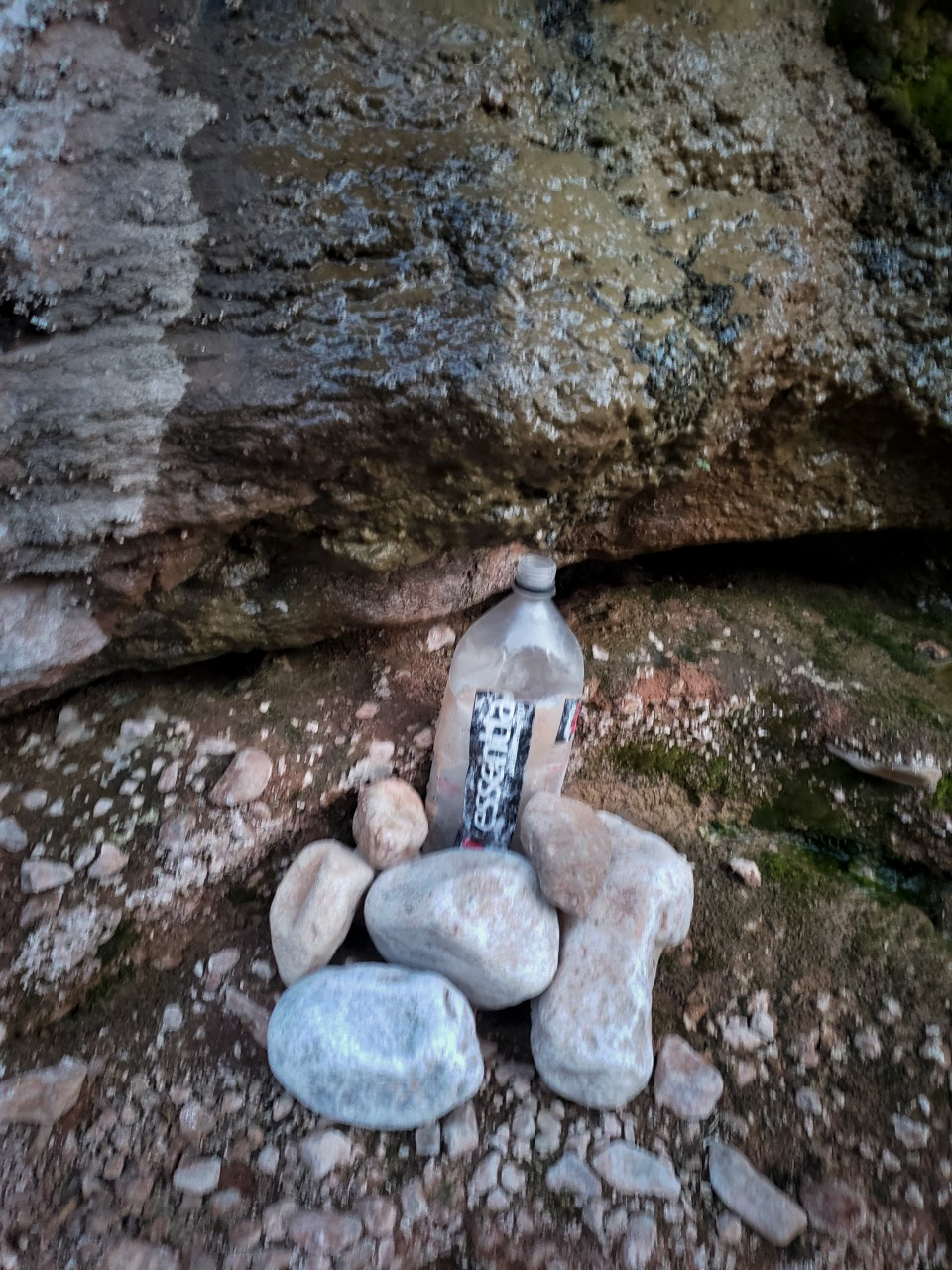
Hogan might agree. On her first attempt, in 2018, she fell 30 feet and shattered her pelvis. (That story comes later.) Ultimately, it would take two more attempts over the next three years for her to make it all the way. When she did, she joined a group smaller than the number of people who have walked on the moon.
Hogan spends a lot of time in the Canyon, which is why, in the interest of full disclosure, this story happened over time. It happened as the stars changed and the sky went from light to dark and then from the shortest day to the longest. Some of the interview happened over text. Some of it happened by phone. Some of it happened via email. All of it happened when Hogan was up and out of the Canyon for a little bit. And then, she went back in.
“I’ve always been a student of the outdoors,” she says, “and the Grand Canyon has always been my favorite spot on Earth.”
Call of the Canyon
Hogan recalls going to the Canyon for the first time with her grandfather when she was maybe 6 or 7. “I remember asking him about going down there,” she says. “He told me it was impossible.” It didn’t take long, she adds, to learn that her grandfather just didn’t know any better — he wasn’t much of an outdoors type.
Born in Tucson in 1981, Hogan bounced around a bit before returning to Arizona. After her parents divorced, she moved with her mom and younger brother to La Jolla, California. They stayed for several years, but when Hogan was 13, her mother fell ill, so she and her brother moved back to Arizona to be with family, then to Virginia to be with another set of relatives.
“I went to college for a few years, then eventually enlisted in the Air Force,” she says. “I always wanted to serve in the military, be a cop and be a park ranger.”
While on active duty, she went back to school. When she left the service, she went back to school again, this time on the GI Bill. Ultimately, she earned three bachelor’s degrees and two master’s degrees — as an undergraduate student, she earned degrees in geography and cartography, criminal justice and psychology; as a graduate student, she walked the paths of emergency management and public administration.
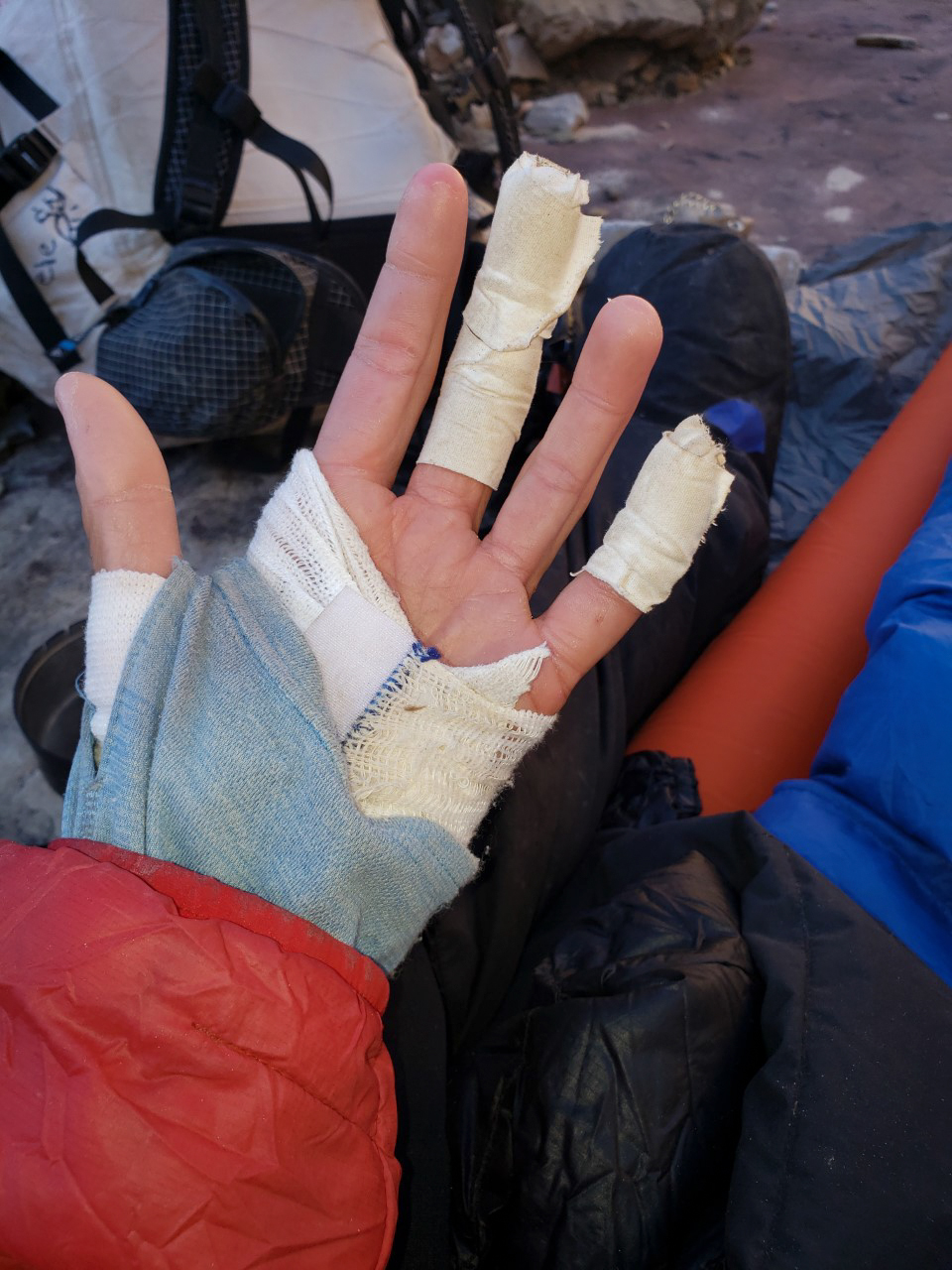
She married. She had a son, Caleb, born in 2005. She divorced. She became a National Park Service ranger, assigned to the Canyon. And since, she has clocked thousands of hours and countless, countless miles below the rim. But, if you ask her to summarize why the Canyon feels like home — or why the draw of the through-hike was so powerful — she simply can’t.
“I wouldn’t know how to adequately portray my obsession and love for this place,” she says. “I’d like to give you a really romantic answer. But if I’m being honest, I just love being out in the Canyon. It’s just me hanging out with a landscape that feels to me like my best friend.”
In total, the Canyon encompasses 277 miles of the Colorado River. As has been documented in the pages of this magazine over the past near-century, it is 18 miles wide in places and a mile deep in others. It is larger than the state of Rhode Island. The oldest rocks exposed in the Canyon, according to the Park Service, are 1.84 billion years old.
It is a place at once ancient, beautiful and deadly — on averge, a dozen people die within its choke each year. And so, to understand Hogan’s story is to try to wrap your own brain around the psychology of extreme endurance athletes.
In a 2019 article for Outside, writer Alex Hutchinson posits that the mental health of endurance athletes is contingent on producing consistently high levels of performance despite everyday challenges and significant adversity. He adds that “researchers have identified eight distinct sub-elements of mental toughness: confidence, constancy, control, determination, visualization, positive cognition, self-belief and self-esteem.”
Hogan, according to the people who know her best, possesses all of those traits — and then some. Well-known Canyon adventurer Rich Rudow, who completed his own traverse below the rim in 2015, knows what it takes to survive. He knows Hogan does, too.
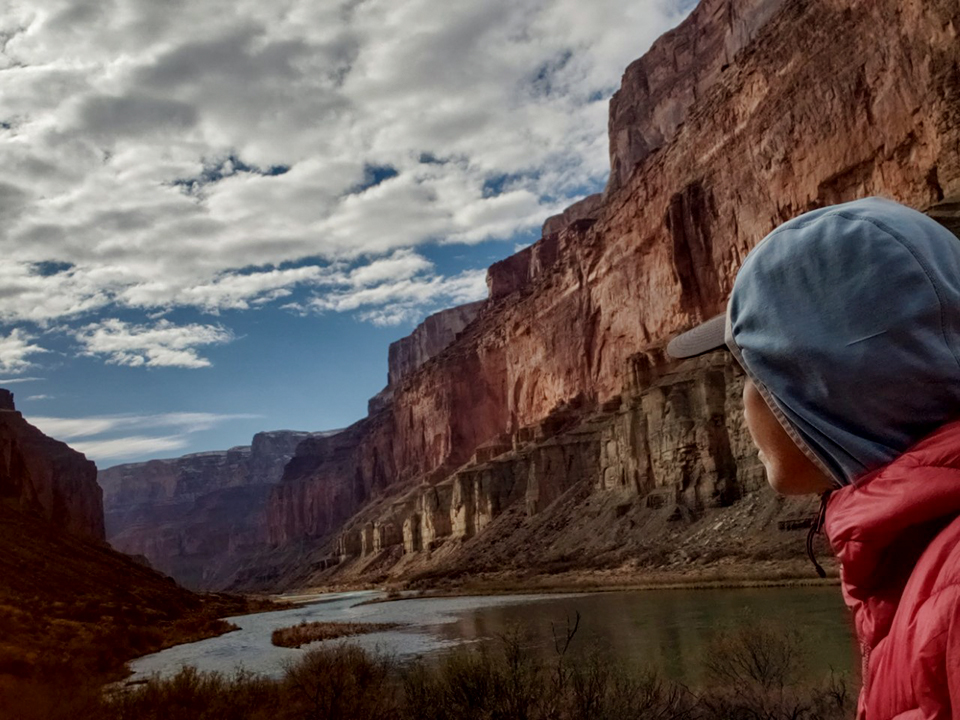
“People really don’t understand how difficult it is to travel below the rim for a few months without the benefit of a trail,” he says. “You’re at the mercy of the weather, the difficult terrain, the lack of water and, of course, your health. Few people have the Canyon experience, and the judgment it brings, to constantly amend your plan because the Canyon has other ideas on how and when you should travel through the three-dimensional maze. Jen’s raw tenacity is what finally allowed her to succeed.”
Giddy Up!
In 2017, Hogan began preparing for her first attempt to through-hike the length of the Canyon. She had previously “sectioned” it, or hiked smaller chunks of it, in full and on both sides. Multiple times. She felt ready. She had visualized the trek. So, with the help of Rudow, rangers and friends, she strategically cached 5-gallon buckets of food and supplies so she could restock every five to 10 days.
On January 2, 2018, she launched at Pearce Ferry. To call that place isolated would be an understatement. Tucked into a cradle at the far western edge of the Canyon, it is an aquatic vein that separates one of the Seven Natural Wonders of the World from Lake Mead. It is the last stop for many raft trips. Hogan walked for two weeks after she left the place.
But then, she was hiking along a high route and the ancient shelf that supported her tiny frame gave out. She fell. And she fell. And she fell some more. She estimates that she plummeted 30 feet before she hit the Earth again.
“Aside from some scrapes and such” — she super-glued them together — “I thought I was OK to continue,” she says. “After a few days, I nearly couldn’t stand up on my own and my pace had slowed greatly. I continued hiking for several weeks and eventually was forced to call the hike at Parashant [Canyon], river Mile 199.”
In total, she hiked for three weeks after the fall, thinking she’d only pulled a groin muscle. “I thought, Man, all right.
I got lucky on that one,” she recalls. She didn’t. And that became obvious by the time she reached Parashant Canyon.
“I crawled into Parashant,” she says. “I finished the last mile in there in this insanely difficult, awful situation. I was crawling because my cache was up there and I just wasn’t ready to give it up. You know? This was a dream that I’d had since I was a kid. I was just like, I just need to get up on the Esplanade.
I’ll heal on the fly. It’s fine. That was the severity of the situation. In my Jen brain at the time, I just wasn’t willing to accept it. But I knew, deep down, it was over.”
She stayed at Parashant for three days, in rain and snow. She had her cache. More importantly, she had her wits — perhaps the biggest necessity for wilderness survival.
There are more details about how Hogan got herself up and out of the Canyon. They feel too raw and personal and emotional to share here, even though every good story needs a conflict and a hero and some semblance of redemption. The Cliff’s Notes version? She did it. Under dire circumstances. And Parashant remains her favorite place in the Canyon. It is, on many planes and among the geological strata of the place, the physical illustration of her mantra: “Giddy up!”
Ultimately, Hogan amended her self-diagnosis to a severely torn groin muscle. Once she made her way into an MRI machine in Flagstaff, though, she learned she’d fractured her pelvis in six places. Still, months later, she’d attempt the traverse again. That time, she came down with pneumonia and ended up spending weeks on her brother’s couch.
Oh, It Goes
Pain is a constellation. Maybe dreams are, too. Both are chaos.
Hogan wrangled the two during 77 days in the cool cusp of winter between 2021 and 2022. She started on the eastern edge of the Canyon, at Lees Ferry, this time. There was more water. It was at a higher elevation, which meant she’d start cooler. It just felt right.
“In a colder, wetter winter, it made sense to start at Pearce,” she says. “But when I did it, it made sense to start at Lees, because it was a warm winter.”
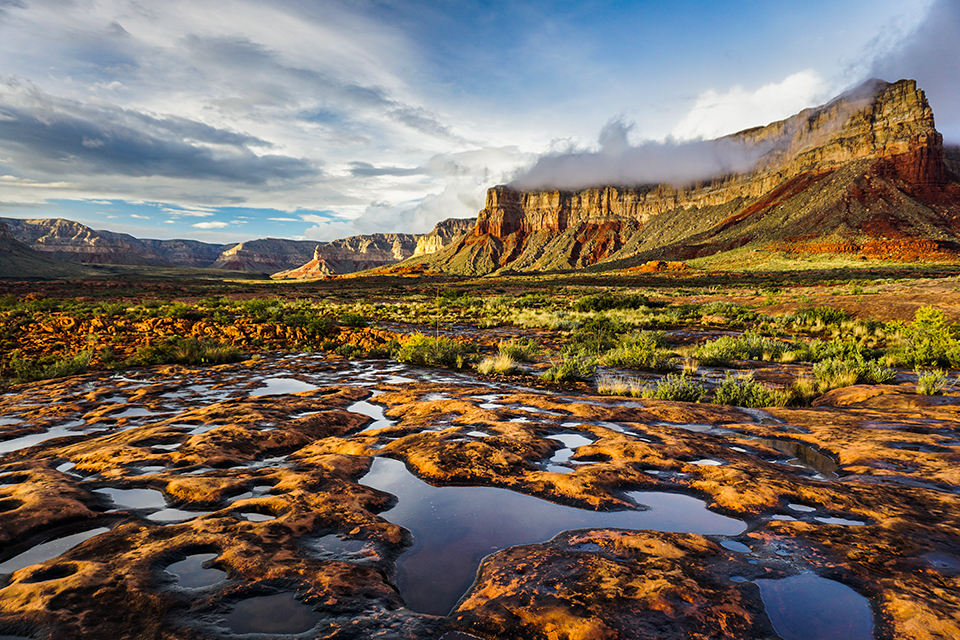
And then she did it. She hiked the whole damn thing in 77 days. With a little help from one of her dearest friends. And a pizza. “I remember the best meal ever in my life,” she says. “I stopped at a ranger station on my way through. She had a hot pizza waiting for me. I sat there on a beautiful day with my friend and pizza. For a few minutes, I forgot how tired I was.”
Hogan’s friend with the pizza, fellow ranger Della Yurcik, easily understands the grit that makes up the brain and heart matter of Jen Hogan.
“One thing that Jen says is ‘Oh, it goes,’ ” Yurcik says. “That means that a route will go even if it looks as though it really doesn’t. Jen is one of the kindest, strongest desert rats around. She loves the heat. And she’ll offer you half of whatever she has. Seriously — she will give you half or more of her Skittles. … She is a tiny force of nature. She loves paddling the river and is a helper — always helping others. Jen is the go-to for all of the Canyon questions. She helps all of us all of the time, and I am so happy to know she will be interacting with the river community on a daily basis up at Lees Ferry.”
Recently, Hogan was reassigned. She’ll be meeting Canyon hikers and rafters at Lees Ferry, the spot where people go to fish, and where river trips start, and where backpackers and hikers emerge from various slot canyons, and where Earth feels small and big and insignificant and beautiful all at once.
Maybe she’s tired. We’ll never know. She says she’d do her traverse again — at any opportunity she gets. And she’s tried. Just this past winter, she started. Time will tell the rest of her story. No doubt, she’ll try it again, year after year after year. She will chase the constellations in the Grand Canyon for as long as she lives.
“I love this place like nothing else in my life,” Hogan says. “Minus my son.”
